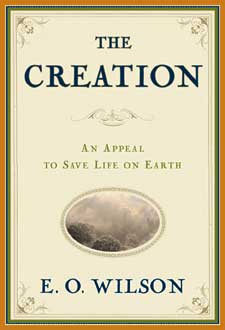In his recent book The God Delusion, Richard Dawkins argues that religion is the enemy of science. And he means all religion – not just the apocalyptic variety whose adepts affect indifference to the fate of this world because they anticipate imminent translation to another. Dawkins’s fellow biologist EO Wilson is just as sure that there can be no compromise with the pseudo-science of intelligent design, a proxy for theism which founders on the insuperable problem of supernatural causation (there being no plausible “transcription from supernatural force to organic reality”). Nevertheless, Wilson is also convinced, unlike Dawkins, that science and religion can make common cause in meeting the most formidable challenge facing humanity: arresting the “pauperization” of the biosphere.
 For Dawkins, it seems that belief in the purposiveness of nature is inseparable from the evils done in the name of religion. Wilson, by contrast, maintains that the metaphysical differences between the scientist and the religious man evaporate at the level of conduct, and that consequently science and religion can work together in order to preserve the ‘Creation’.
For Dawkins, it seems that belief in the purposiveness of nature is inseparable from the evils done in the name of religion. Wilson, by contrast, maintains that the metaphysical differences between the scientist and the religious man evaporate at the level of conduct, and that consequently science and religion can work together in order to preserve the ‘Creation’.
His new book opens in this spirit, with a “Letter to a Southern Baptist Pastor”. In it, Wilson invites a representative of the denomination from which he is an apostate to enter with him into an “Alliance for Life”. He sets out to convince the pastor of two things. First, that living nature is in mortal danger. Our ecosystem is entering a “spasm of extinction” potentially every bit as destructive as that which saw off the dinosaurs, and we are the “giant meteorite” this time. Human beings have a moral responsibility, therefore, to try to stave off disaster. Moreover, since we are capable of sustaining life only in a proportionately tiny corner of the universe, the fate of the creation is at the same time the fate of humanity. And second, these basic principles of human ecology can be acknowledged by people of differing beliefs.
Wilson’s moral case for conservation is rooted in a metaphysically non-specific form of reverence for nature that he sees articulated in the famous last sentence of Darwin’s Origin of Species: “There is grandeur in this view of life, with its several powers having been originally breathed into a few forms or into one; and that … from so simple a beginning endless forms most beautiful and most wonderful have been, and are being, evolved.”
That sentence closes a paragraph which begins with Darwin evoking an “entangled bank” teeming with insects and plants of all kinds. Darwin’s entangled bank is what Wilson calls a “microwilderness”, a domain untouched by human hands and containing hundreds of species of both flora and fauna. Wilson says it was this idea of the microwilderness which first got him interested in a conservation project in the Boston Harbor Islands area. And it is this small project, in which he supervised local children in a biodiversity survey, that provides Wilson with a model of scientific natural history as a kind of civic institution, not to mention civic duty.
Wilson urges a global collaboration between professional scientists and amateur naturalists in order to map the 10 million species on earth still awaiting discovery. To succeed in this undertaking, he says, would be to write the “Encyclopaedia of Life”. Much of the book, then, is a hymn, couched in notably Romantic terms, to the naturalist’s curiosity, to his urge to enumerate, map and tabulate. At the same time, it is a paean to a nature that can move us and awaken our feelings, and which exacts obligations from human beings that transcend parochial conflicts between philosophies.
The book is also an attempt to set out the scientific argument for global conservation, which Wilson sees as a complement to the religious argument “on behalf of the Creation” (they’re complementary, one assumes, because they both derive from the same reverential attitude to nature). In a magnificent and terrifying chapter devoted to the case of the fire ant, he takes the destructive spread of this species across the southern United States and the Caribbean as an example of the drastic homogenisation of the Earth’s ecosystems.
But Wilson takes that scientific argument further, in a direction that the pastor is unlikely to want to follow. Forgetting that his task is to persuade his correspondent, Wilson doesn’t just expound those basic principles of biology relevant to the cause of ecological conservation; he looks forward to a time when biologists will be able to explain nothing less than “the nature of mind and reality and the meaning of life”. In doing so, Wilson reminds us that the final paragraph of Origin of Species expresses not just reverence but also, as Stephen Jay Gould once put it, “satisfaction” – satisfaction that the immense complexity of life on the entangled bank could emerge from lawlike regularities susceptible to rational explanation.
Biology is not merely the contented bedfellow of the religious outlook, therefore. It is also, Wilson insists, the “logical bridge” between the natural sciences, the social sciences and the humanities. Wilson doesn’t provide an argument for this extravagant claim here. For that, one has to turn to an earlier book of his, Consilience, in which he tried to show that there is a single species of explanation which unites the disparate branches of human inquiry in a “seamless web of cause and effect”. You don’t need to be a pastor to think that this reductionist dream will never be realised. ■
The Creation is published by WW Norton

